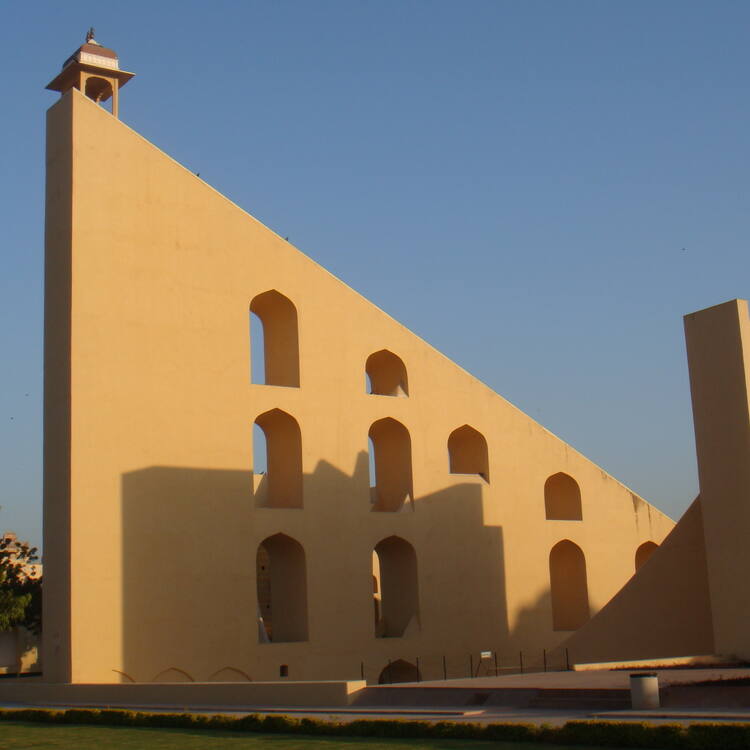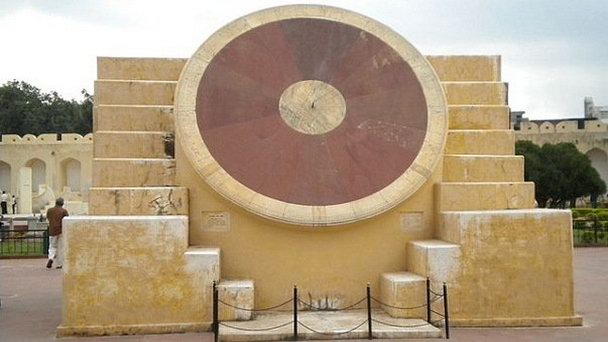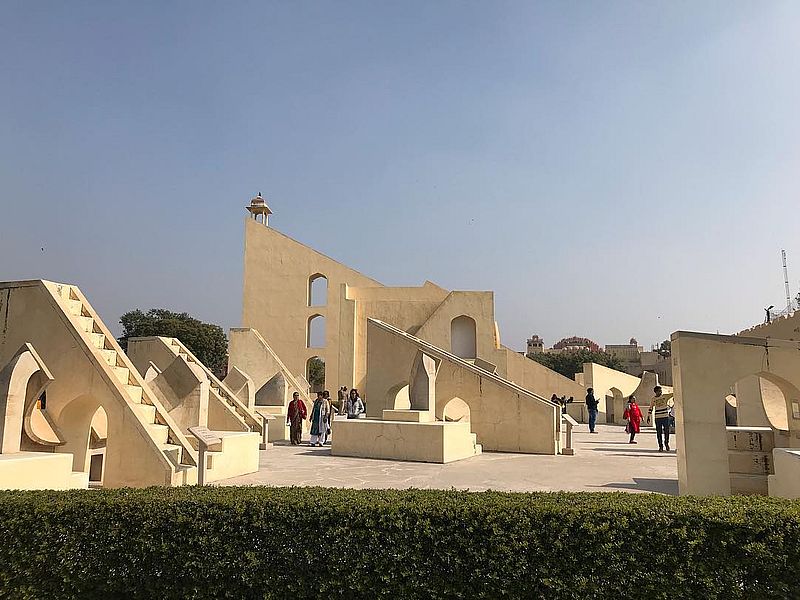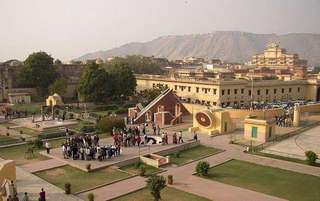Jantar Mantar Jaipur: The World’s Largest Sundial
Built by the Rajput king Sawai Jai Singh II in 1734, Jantar Mantar, Jaipur is an astronomical observatory, which features the world’s largest stone sundial. India has five of them, and the largest one is in Jaipur. This Jantar Mantar observatory is also a UNESCO World Heritage site that every tourist must add to their itinerary. Here’s all that you’ll ever need to know about the observatory before visiting it.
Содержание
Jantar Mantar, Jaipur History

Jantar Mantar in Jaipur is a fascinating astronomical observatory, located at the heart of the city. This is one of the largest observatories in the World, comprising of interesting stone structures that help to interpret the position of celestial bodies and calculate local time. Enumerated as a World Heritage Site by UNESCO, Jantar Mantar in Jaipur attracts architects, mathematicians, geographers and historians.
Jantar Mantar, Jaipur was constructed by Maharaja Sawai Jai Singh II, and he built 5 such observatories in different parts of the country: Jaipur, Mathura, Delhi, Ujjain, and Varanasi. The one in Jaipur is the largest of all, whereas the one in Mathura is almost in ruins, now. Maharaja Sawai Jai Singh II is the founder of Jaipur city and a potential ruler of Amber region. Along with his political expertise, he was also a scholar in physics, mathematics, and astronomy. During his reign, he was commissioned by Emperor Muhammad Shah to rectify astronomical calculations in Islamic zij tables. To accomplish this task, he gathered astronomical data from European and Persian nations and studied and interpreted the same.
After extensive research and studying the gathered data, Maharaja Sawai Jai Singh II constructed stone made instruments to determine the position of planetary bodies and measure time. Jaipur Jantar Mantar was built between 1728-1734 and its stone instruments are considered to be more accurate than others.
When To Visit Jantar Mantar, Jaipur
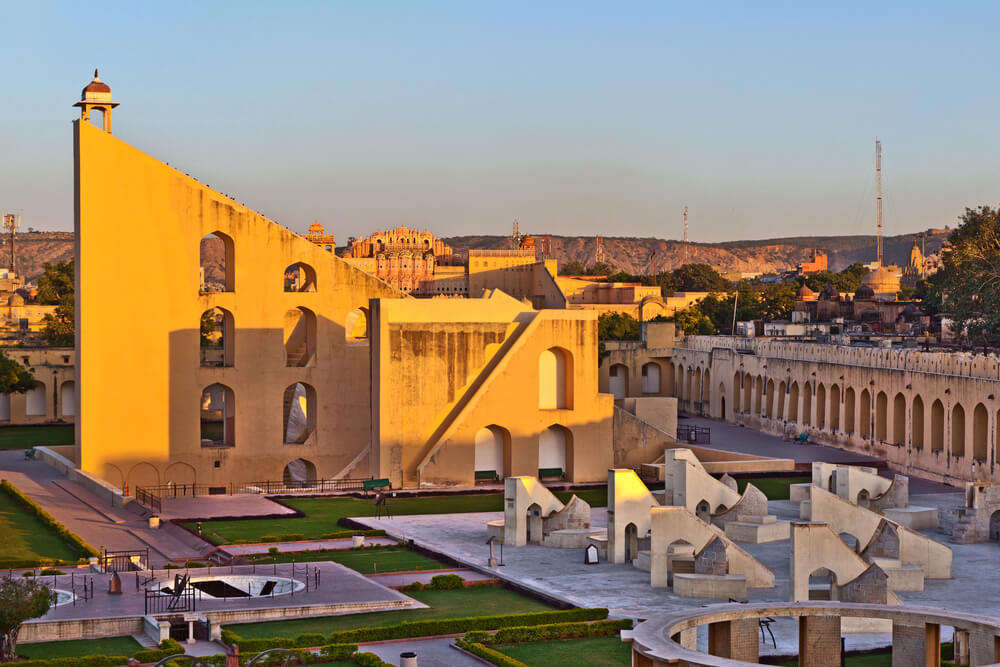
Best time to visit Jantar Mantar: The best time of the day to visit Jantar Mantar in Jaipur is noon. During mid-day, the Sun is vertically above and it is easy to understand the process of interpretation of the readings of each instrument.
Jantar Mantar Jaipur timings: Jantar Mantar in Jaipur remains open from 9:00 am to 4: 30 pm, on all seven days of the week. Generally, one can see the whole of Jantar Mantar in 30 to 45 minutes of time.
Jantar Mantar Jaipur entry fee: Jantar Mantar, Jaipur entry fee is INR 50/person for Indians and INR 200/per person for foreigners. The entry cost for Indian students is INR 15/person and that of International students is INR 25/person. Students get this discount on showing valid ID proof.
Jantar Mantar Jaipur light and sound show timings:
- Oct – Feb: 6:30 pm onwards
- Mar – Apr: 7:00 pm onwards
- May – Sep: 7:30 pm onwards
Major Attractions Within Jantar Mantar
The Jantar Mantar observatory in Jaipur comprises of 19 instruments to measure the position and distances of extraterrestrial bodies. These instruments are basically stone structures, depicting interesting geometric shapes. It is advisable to take a local Jantar Mantar, Jaipur guide or an audio guide for a clear understanding of the instruments and how they work.
1. Vrihat Smarat Yantra: The Huge Sundial
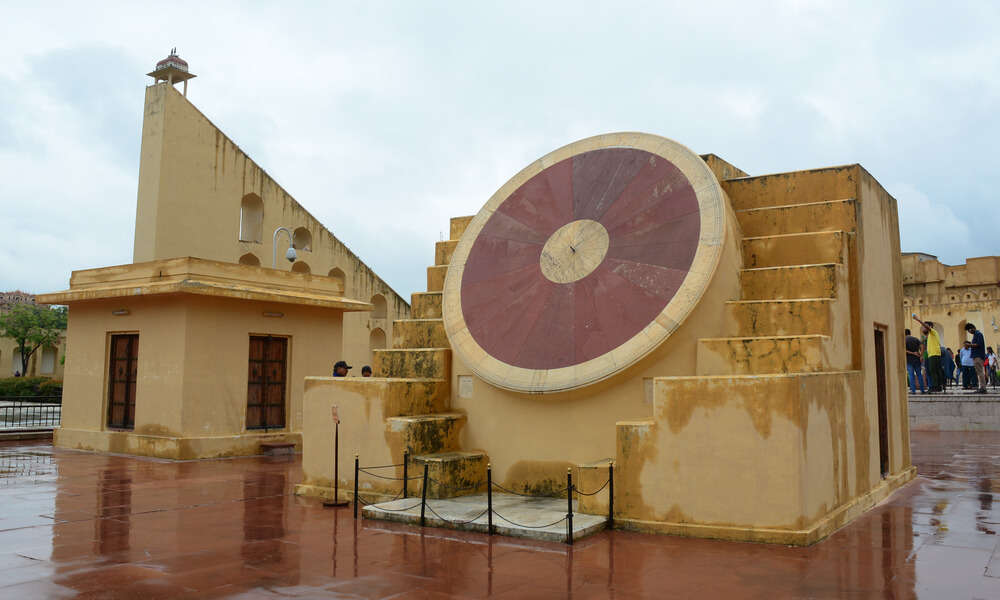
Vrihat Smarat Yantra is a gigantic sundial, placed at the centre of the Jantar Mantar observatory. This is 27 m long and renowned as the tallest sundial in the World. The Samrat Yantra, translating to ‘supreme instrument’ is an equinoctial sundial and measures time up to the precision of two seconds.
The shadow of the triangular wall of the yantra, which is positioned in the north-south direction with an angle identical to the latitude of this location, travels equal distances in equal intervals of time, on the eastern and western quadrants. This movement is standardized to calculate and interpret the local time.
Rajasthan Holiday Packages On TravelTriangle
Читайте далее:

